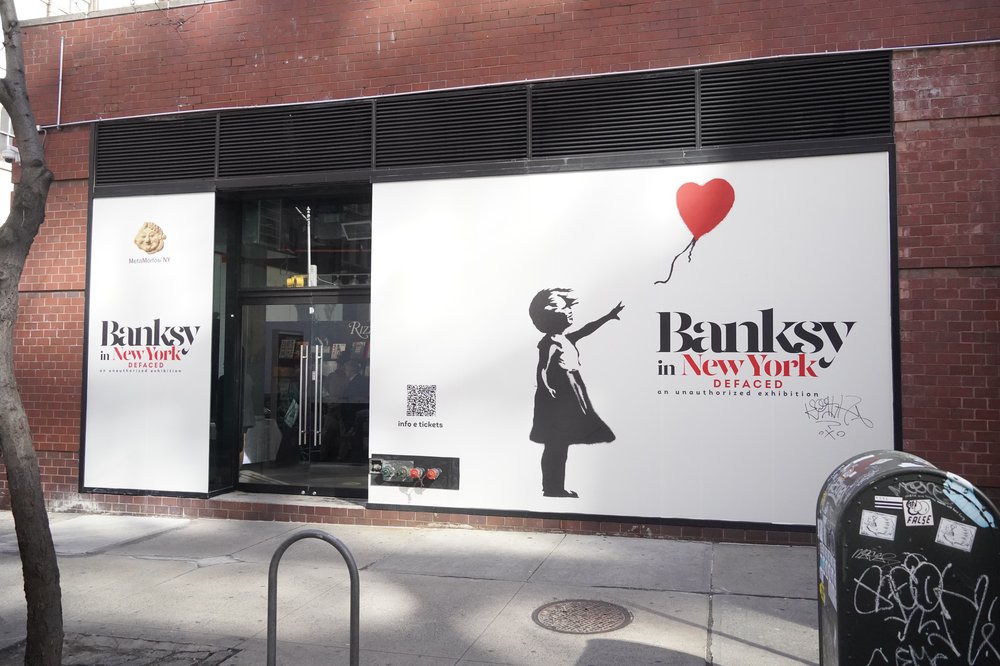Banksy’s 2013 NYC residency gets revisited at new gallery
Feb. 16, 2023, 5:41 p.m.
On Oct. 1, 2013, the elusive street artist known as Banksy put up one of his signature stencil pieces on a random wall on the Lower East Side, setting off a monthlong public art treasure hunt.
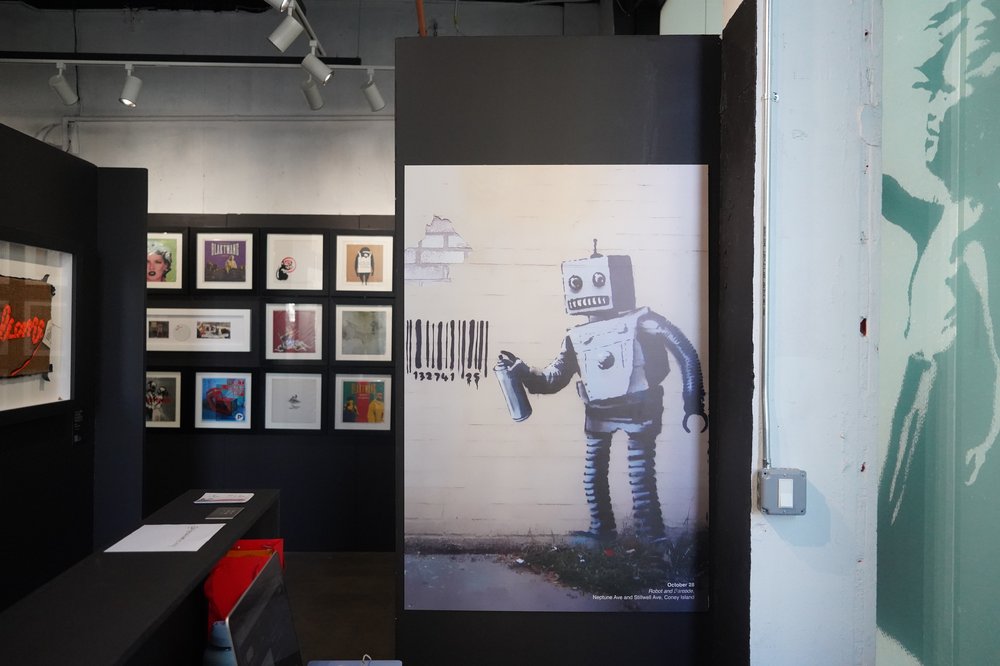
A new exhibition in Lower Manhattan is highlighting the frenzy that happened in October 2013, when street artist Banksy surprised the city with a monthlong public art project.
An unauthorized showcase at 378 Broadway in Tribeca titled “Banksy in New York: Defaced” is open now and runs through May, organized by MetaMorfosi NY.
The show includes reproductions and prints of dozens of Banksy's most famous works, officially vetted by the artist's company, including large-scale recreations of eight of his NYC pieces. It also features four original pieces, an extensive map and video detailing the NYC residency, and other Banksy ephemera and background.
The project originally kicked off on Oct. 1, 2013, when the elusive street artist put up one of his signature stencil pieces on a random Lower East Side wall. "The Street Is in Play" depicted a boy standing on top of another boy's back, holding a can of spray paint within a sign that read, "Graffiti Is A Crime." This stencil was part of "Better Out Than In," in which the pseudonymous artist attempted to create a new piece of art somewhere in the city every day for 31 days straight.
For the entire month of October, talk about the previous night's Banksy as well as wonder and speculation over what the mysterious artist was going to do next went on every day, everywhere and in every way. Some critics turned up to make fun of him, while fans clamored to take selfies with the latest stencil.
The project challenged conventional ideas about the placement and value of street art, and the role of the city in policing public art. It also became a joyous treasure hunt for locals and art aficionados, who scoured the city for the chance to be the first to spot a new work by Banksy in the wild. At its best, it was provocative and unforgettable, as with "Mobile Waterfall," a delivery truck converted into a moving landscape painting to instill calm in people, or "Sirens of the Lambs," in which squealing animal toys acted as a commentary on animal exploitation.
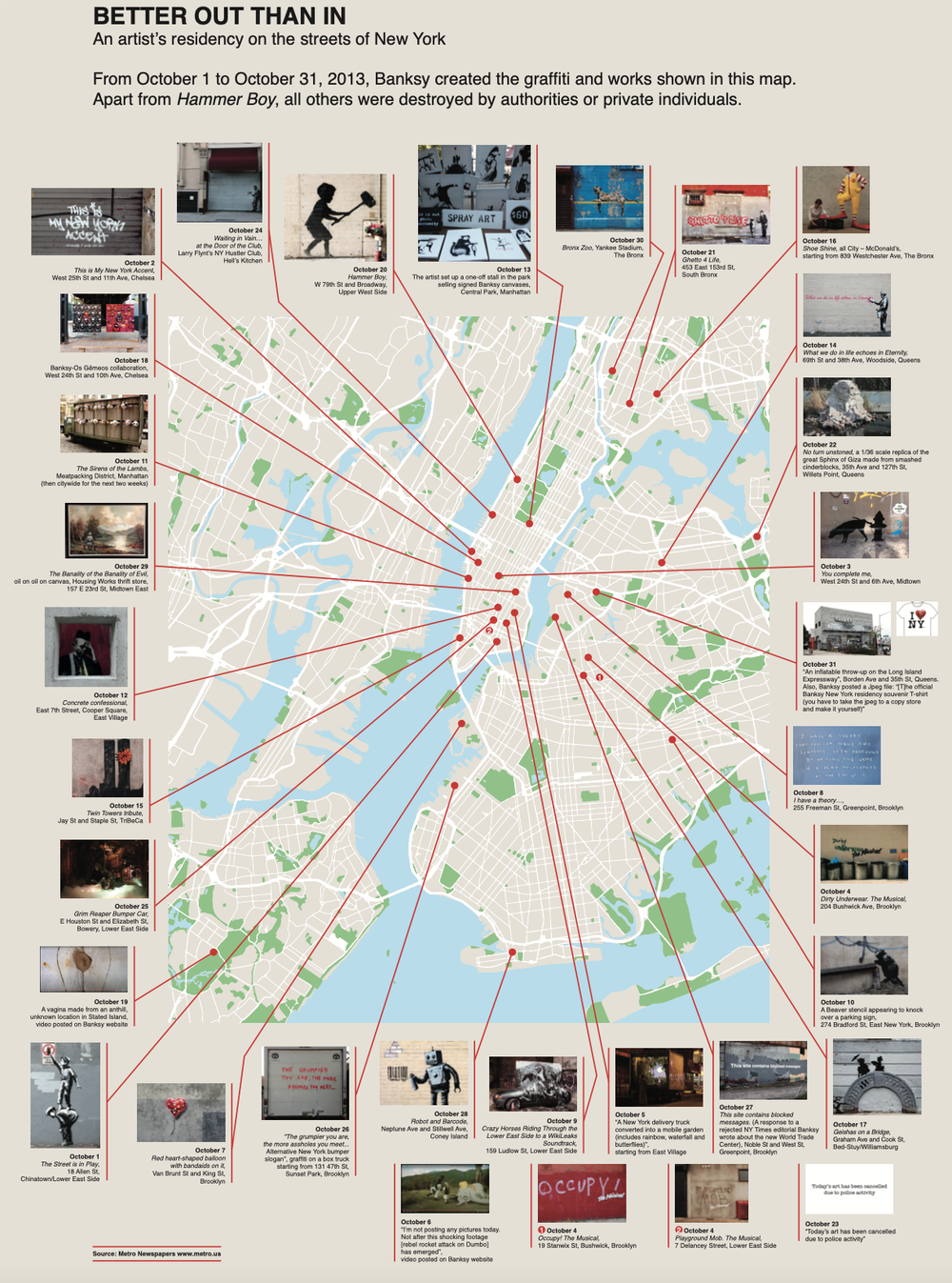
Elena Frigenti is the gallery manager for exhibit organizer MetaMorfosi NY, which put on the exhibit "Banksy: Building Castles in the Sky” last year. She said "Better Out Than In" was a project that only could have happened in New York City.
"It's a kind of explosive mixture between the art of Banksy himself, and also the contamination from the vibes from the city," she said. "We can't deny that New York City is a place that really has a big impact on everyone here, and that's true for the artists as well. I think that he found himself inspired by the vibes of the city."
The gallery also includes dozens of silkscreen prints and sculptures of Banksy's most famous works from throughout his career, including "Balloon Girl," "Flower Thrower" and "Mickey Snake." Banksy does not officially authorize most showings of his work, but instead relies on his company, Pest Control Office, to authenticate works. Everything in this show has been approved by that authority.
New York magazine's senior art critic Jerry Saltz, who covered the residency at the time, has never been a big Banksy fan, but he places his work above those of his competitors and imitators.
"I just find it real fun, engaging propaganda," Saltz told Gothamist. "However, his reputation has now grown to such a degree that anytime he does anything, people really pay attention. It's like he's dropping a new hit song, and for that I really have to credit him that his work is taken seriously by a great wide public."
Despite his reservations about the artist, Saltz acknowledged that the NYC residency was a major cultural conversation at the time, and has spawned its own mini-industry. "Looking back, you could say it was part and parcel and also an early stage of something that essentially has taken over a lot of culture in general, which are these big destination treasure hunts and popups," he said. "Everybody goes to look at it, take a selfie, and then leaves."
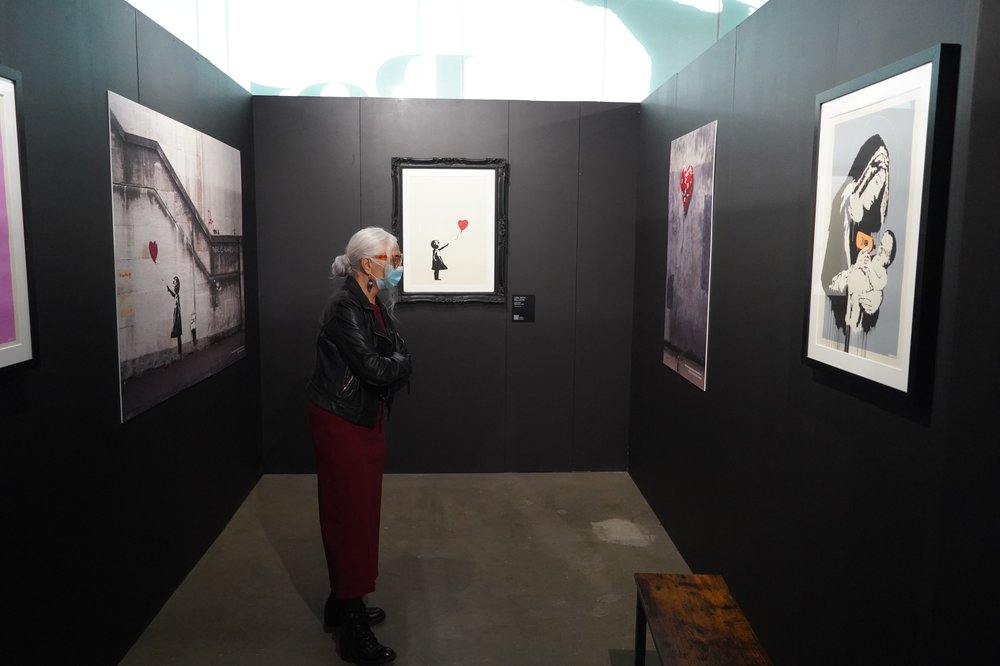
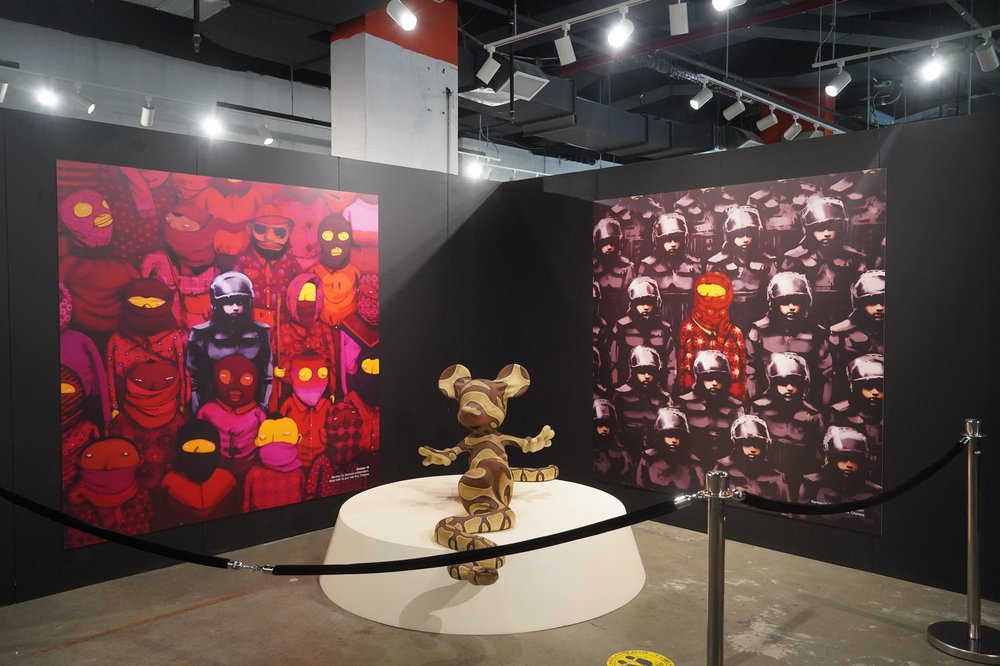
Frigenti says that Banksy's relationship with New York goes back further than 2013. Banksy — whose real identity is unknown, though he's been rumored to be a Bristol resident named Robin Gunningham, Massive Attack frontperson Robert Del Naja, or even a collective of people — visited NYC in the early 2000s, when he was still a relatively underground graffiti artist best known for his anti-capitalist and anti-war murals.
Banksy found a kinship with the city’s street art and punk culture, and was inspired by his visit. "He was like, 'wow, this is really something for me,'" Frigenti said. "He took something from the city, and [when he came back in 2013] he gave something from himself back to the city. And I think that is [why] the works of Banksy here are so unique and still resonating, even though we only have one piece left."
Unfortunately, the city was not wholly receptive to Banksy's renegade art in 2013. Then-Mayor Michael Bloomberg was particularly against the project. "Graffiti does ruin people’s property and it’s a sign of decay and loss of control," Bloomberg said at the time. "Running up to somebody’s property or public property and defacing it is not my definition of art. Or it may be art, but it should not be permitted. And I think that’s exactly what the law says.”
As a result, much of Banksy's work was confiscated or destroyed. Some was covered up by other graffiti artists. And a few private collectors decided to completely remove some pieces from their locations in order to own or sell them. "Brooklyn Bandaged Heart," which was originally put up in Red Hook, ended up on sale at Art Miami.
"Something that I know for sure that Banksy really doesn't like [is] when his works are taken out just for profit," Frigenti said.
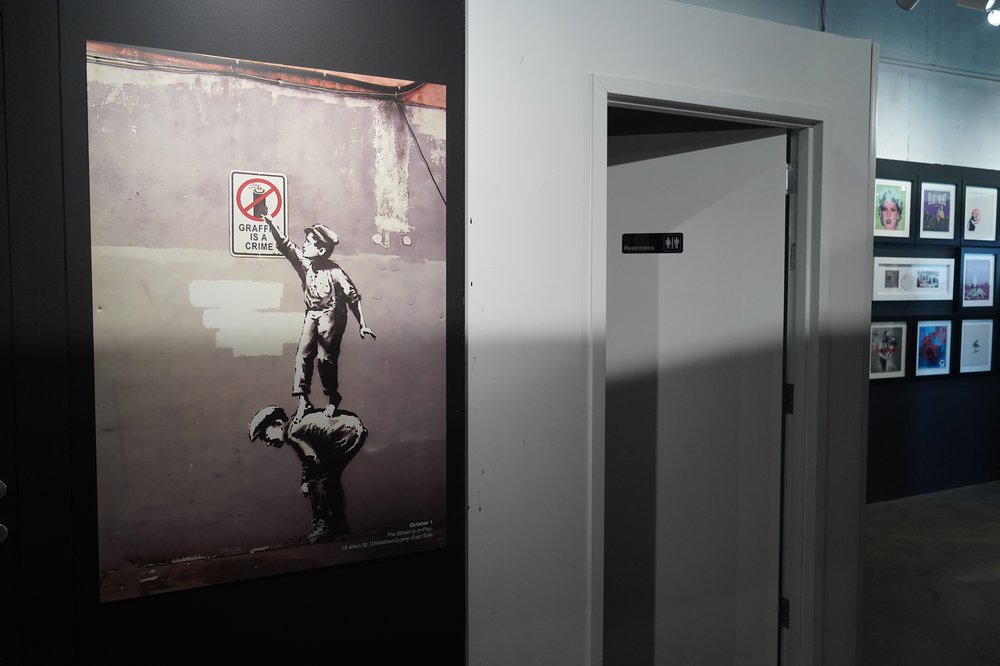
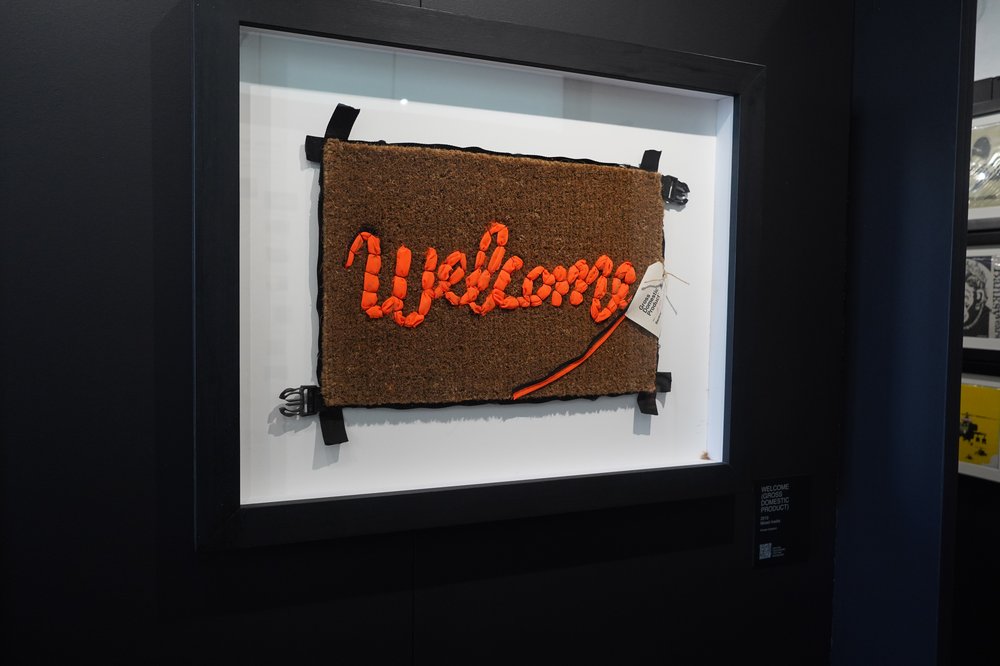
Saltz says the lust for a new Banksy is understandable, because Banksy is the closest thing to the Andy Warhol of street art. He believes that people tend to filter Banksy's work through a particular bifocal lens: "On the bottom is art, and on the top is money," Saltz said. "Every single time one of these things pops up, people go, 'Oh my God, that was on your building? You're now a millionaire.' People get excited because somebody got rich, and then we're jealous of them and we wish that we had gone there that night and torn it down and taken it home."
The only piece that remains intact in the city is "Hammer Boy," located just east of Broadway on 79th Street on the Upper West Side. It shows a child with a hammer, about to strike a hydrant in the style of a carnival "strongman" game. The only reason it is still there is thanks to efforts by Zabar's.
"They put it behind a glass, they take care of it," Frigenti said. "They have raised funds to protect it. It is venerated, like a fresco."
In addition to the recreations of certain key NYC pieces in “Banksy in New York: Defaced,” an original five-minute video offers glimpses of the "Better Out Than In" artwork and adds context for its enormous popularity. "Although it took place entirely on the street, the show found its true resonance online,” the film’s narrator says, “becoming less an art show than a citywide, full-contact game of hide-and-seek."
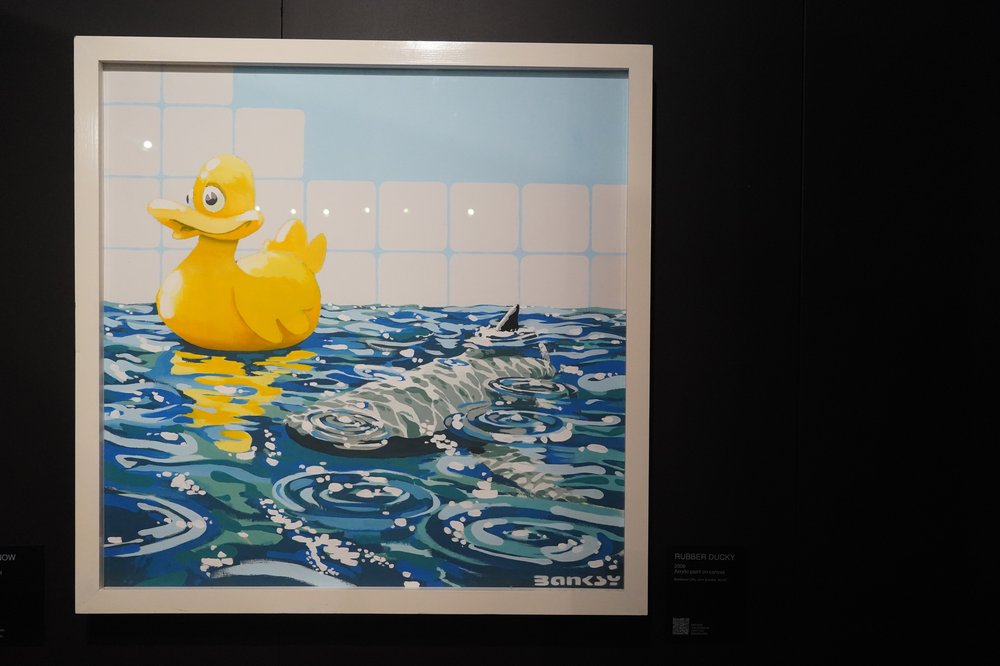
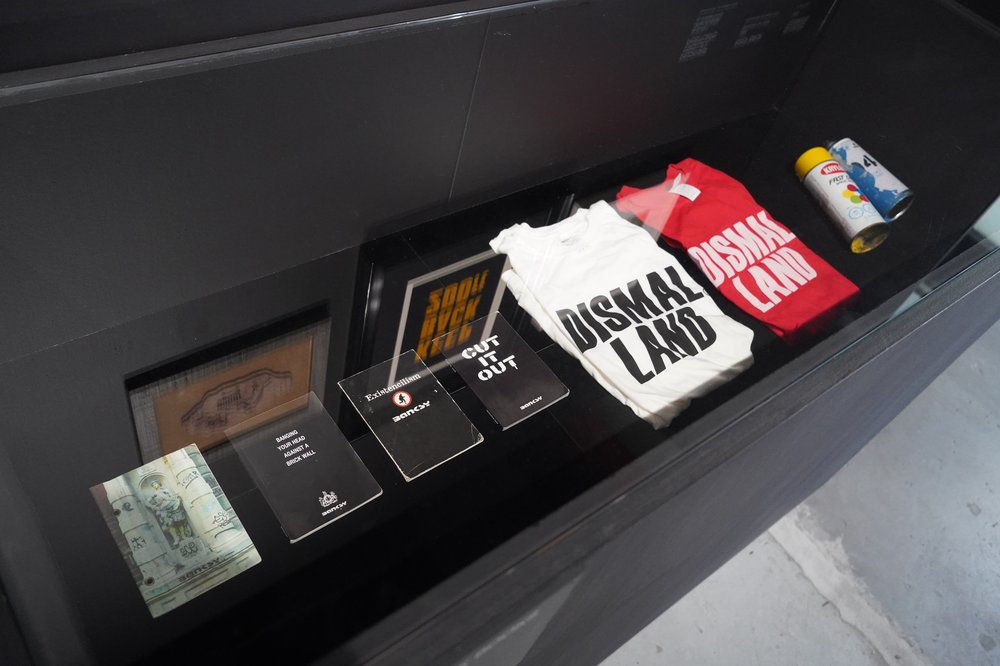
The four original pieces in the gallery include "Welcome (Gross Domestic Product)" from 2019; "Family Target" from 2003; "Cloud DJ" from 1998-1999; and "Rubber Ducky," an oil on canvas painting from 2006. Frigenti noted that "Rubber Ducky" is a particularly unusual piece from the artist: "His detractors were saying [at the time] that in the end, he was just good at doing stencils. So he wanted to prove that he could paint, and he did."
Whether Banksy might return to the city in honor of the 10th anniversary of his residency is anyone's guess. But Frigenti thinks he'd get a much different reception if he did.
"You have to understand that when he started back in the '90s in Europe, and also when he was here doing graffiti, it was something on the edge between being a vandal and being an artist," Frigenti said. "Now the culture has really evolved, so if he decides to come back, I'm more than sure the city would be more than welcoming and his work would be here to stay."
“Banksy in New York: Defaced” is on display through May 2023. Get ticket info here.
